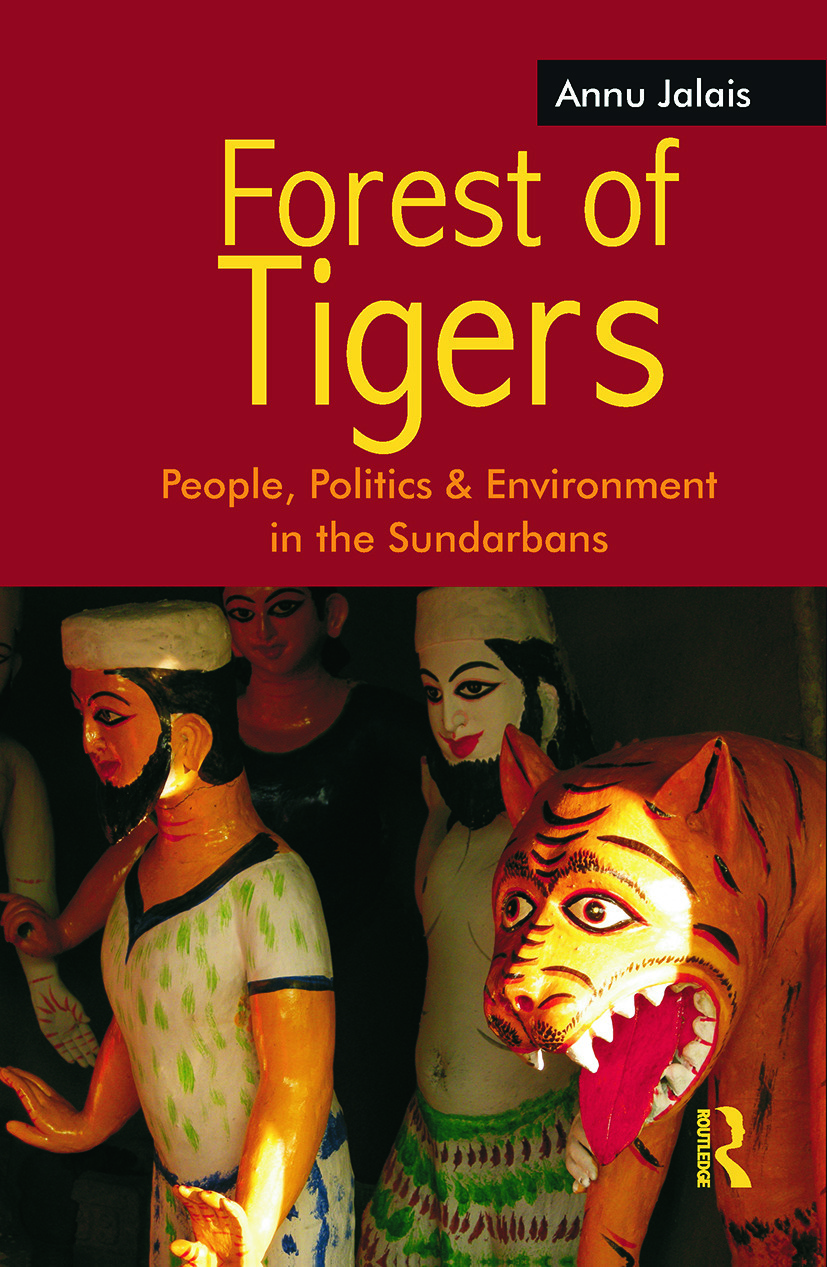Forest of Tigers is a deluge of a detailed anthropological account on the intractable lives of Sundarban islanders, published a decade back, yet holds its significance in several disciplines of contemporary research such as human-nature interaction, political ecology, cultural ecology and posthumanism.
The book is an augmentation of the author’s PhD thesis, which starts with an Introduction to Sundarbans’ geological history, the archipelago essence it carries through the explanation of its ecosystem and its inhabitants, comprising both humans and non-humans. It is further divided into six chapters, excluding an introductory and a concluding chapter. Each chapter encapsulates various aspects of Sundarbans and their people through a thick description of their social geography, historical materialization, economic quagmire, political bond and religious & cultural ethos. The author’s main aim is to highlight and trace the tension between human and non-human (both forest & tiger), which becomes the book’s central theme that runs through every chapter. The author challenges the oft-cited dichotomy between Bhodrolok and Gramerlok. The marginals, that is, the lower caste Bengalis, are forced to live and operate in the scheme of illegality, injustice and tragic history of Sundarbans.
Jalais, in her book subtly brings out the various discourses of cosmological notions of nature, where the interrelatedness of forest, humans and tigers symbolizes the presence of both spiritual and animate cosmic unity. What signifies in this perspective is the ‘interrelated totality’ as proposed by Morris (1991), where the marginal Sundarbans islanders pertaining to cosmological ideas sees the natural world in the anthropomorphic term, i.e., spirit or mind permeated with nature as a living entity through the cultural ethos related to forest-dwelling. The author’s detailed and graphic explanation of several cultural beliefs, such as the combination of Islamic and Hindu deities through Bonbibir Johurnamah or worshipping Daredevil Kali, seems like an act of inclusiveness, instilling an ethos of equality between Hindus and Muslim, humans and animals, men and women, rich and poor (p 29).
The book bequeaths us with several inquiries that needed some clarifications, especially when read in contemporary times. First; when addressing the refugee Dalits of Bengal like Poundras, the author had used the term pods, although mentioning its actual genealogy, a better explanation for the Dalit sub-caste status was required, especially when several discourses on social identity, marginal identity and imagined community was used as a reference to colonial society of Bengal. The author could have highlighted the social movement of the Pods of Bengal. They demanded Poundra (Kshatriya) identity for achieving recognition and social justice (Barman, 2013), which is one of the sub-themes the author continually addresses in the book rather than bring in the allegorical connotation of why they were being called pods (a derogatory word in Bengali meaning buttock). “Parasuram needed people to come and fight ………posteriors” (p.50).
Second, the author has intricately addressed the subtle yet prevalent dichotomies present around the Sundarbans, i.e. Up Vs Down, human Vs non-human and Bhadralok Vs gramerlok, but has ignored the intra-caste dynamics and power-access- control within the Dalit- Bahujan form. It has touched upon the Adivasis and their inception in Sundarbans since the land reclamation time, while discussing the history of Hamilton island with a detailed account of demographics in Chapter III (p.45-50) but has not given anecdotes on their current /then status in the village, it somehow has missed the distinction between the Adivasis and Dalits of Sundarbans.
Lastly, several of the observation and findings from Garjontala has been generalized to almost every villages and populace present in Indian Sundarbans, which may not be accurate.
Being an ethnographer, Jalais somehow overlooks discussing her methodology, and most importantly, her positionality while conducting her fieldwork. In several of the instances, we find Jalais identifying herself, knowingly or unknowingly, as a Bhadralok (Chapter I, p 11-16), whether by narrating her childhood experiences of exotic visits to Sundarbans or entering the village setting as an ‘English teacher’, the villagers have already identified her as ‘not among them’, but an outsider. However, throughout the book, Jalais makes an honest attempt to blend into the populace of Garjantola social group through her host family. Though she starts as a stranger, she develops social ties in due course through engaged coexistence such as attending village meetings, going with the village women for prawn collection in the rivers, and as Narayan (1993) reasons in his article, How Native Is a “Native” Anthropologist? “Knowledge produced in the scheme of ethnography, especially by outsiders, is not transcendental, but situated, negotiated, and part of an ongoing process which spans in personal, professional, and cultural domains”.
In conclusion, Jalais is ‘The pioneer’ in Sundarbans based anthropological research. Whether academia or not, one will find this ethnographic account a gripping ride into Sundarbans, not much into wildlife but more into the quotidian struggles of the islanders. It is a greater extent to Ghosh’s Hungry tide but in a more nuanced, phenomenological and lived version.
References:
- Barman, R. K. (2013). From Pods to Poundra: A study on the Poundra Kshatriya movement for social justice 1891–1956. Contemporary Voice of Dalit, 7(1), 121-138.
- Flick, U. (2018). An introduction to qualitative research. Sage.
- Morris, B. (1991). Changing conceptions of nature. The Society of Malawi Journal, 44(2), 9-26.
- Narayan, K. (1993). How native is a “native” anthropologist? American anthropologist, 95(3), 671-686.
***
Camellia Biswas is a PhD Scholar in HSS, IIT Gandhinagar.
